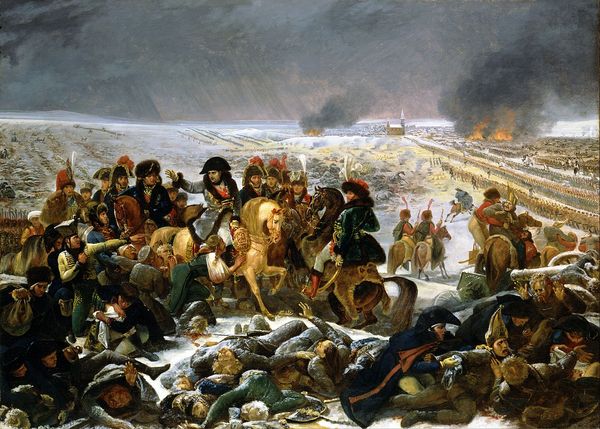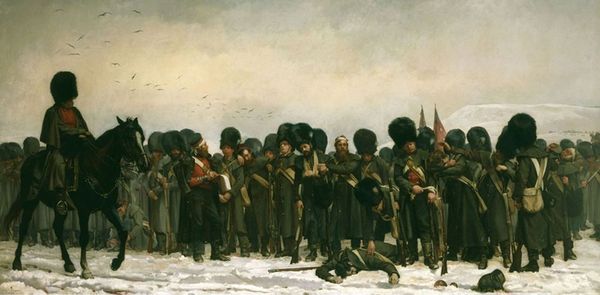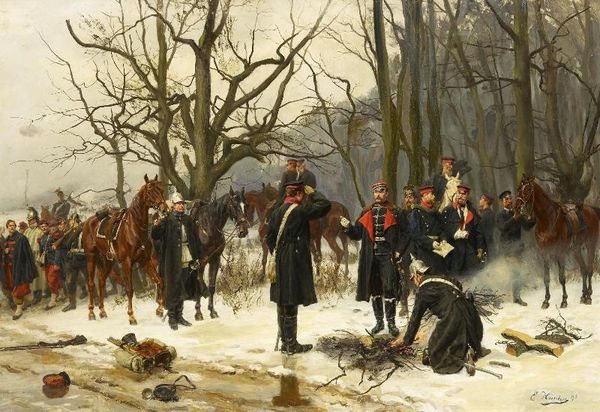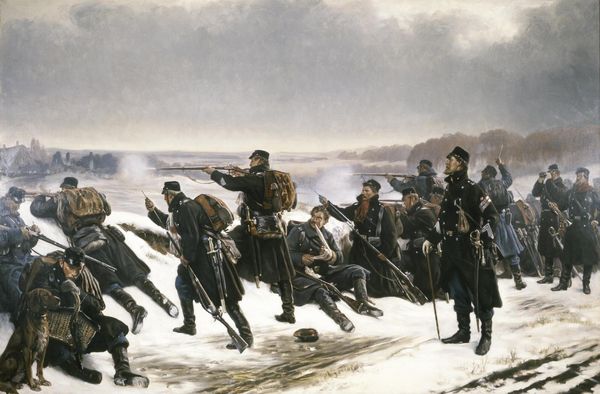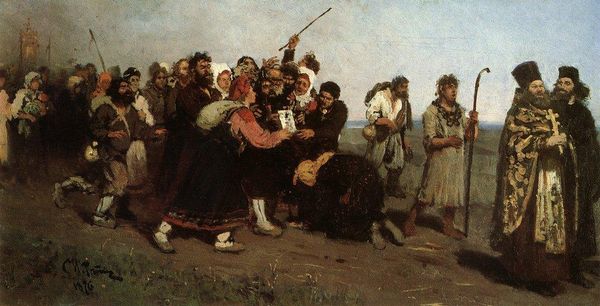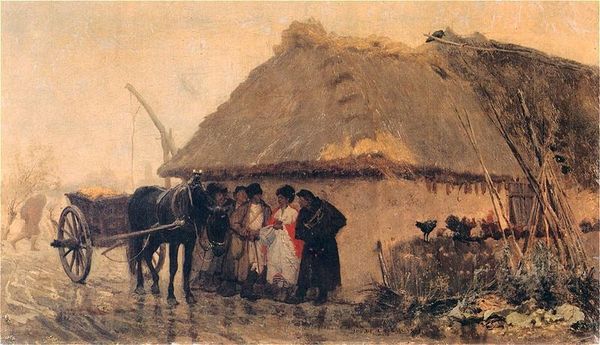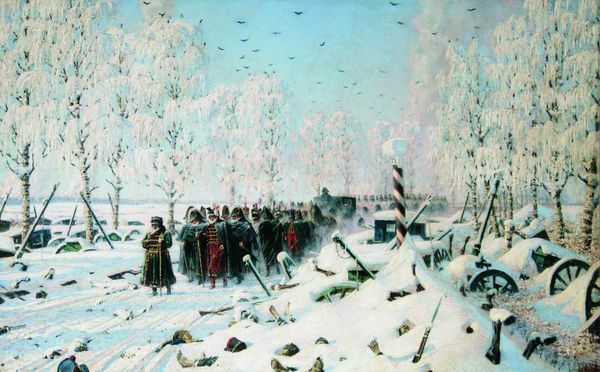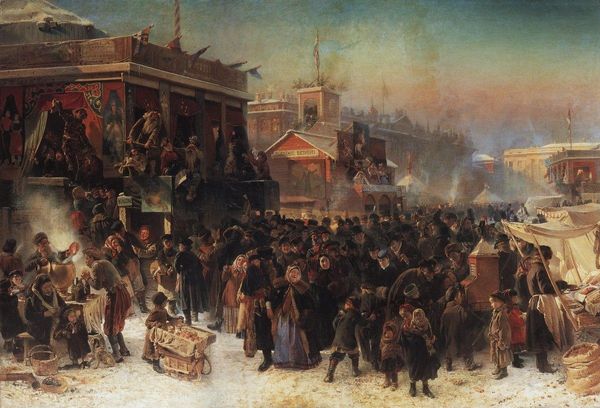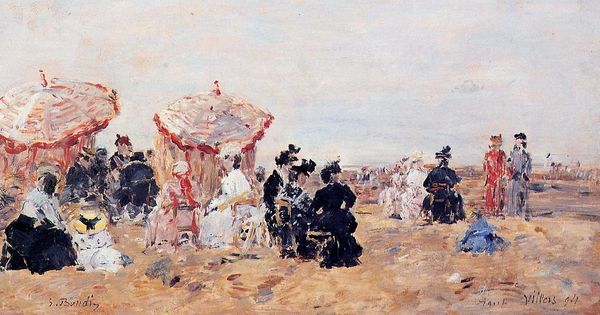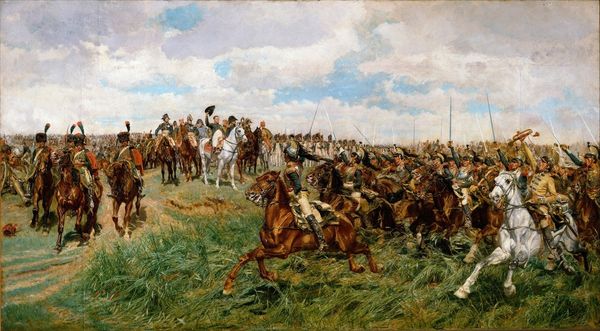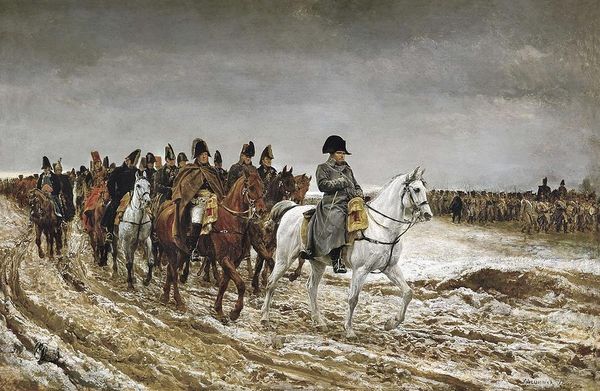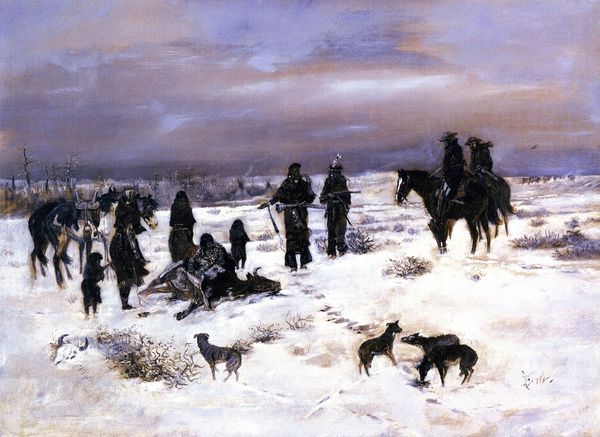
painting, oil-paint
#
painting
#
oil-paint
#
landscape
#
genre-painting
#
realism
Copyright: Public domain
Editor: We're looking at Józef Chełmoński's "Case Before the Mayor," created in 1873 using oil paint. It’s a very busy scene with people, horses, and buildings all covered in snow. There's a feeling of coldness, both in the color palette and just the overall setting. It's realism, but there's so much activity. What’s your interpretation of this scene? Art Historian: The concentration of figures near what we can assume is the mayor’s building speaks volumes. Buildings, like bodies, are seldom neutral; in iconography, the buildings often assume gender. Look at the building; consider that it is being approached for decision-making, judgment and resources. How would you “read” the positionality of petitioners in this landscape? Editor: That's interesting... It feels like a moment of desperation. They’ve come all this way, probably enduring the cold, placing their faith in this… structure. The building has an almost monumental presence against the bleak landscape, but it's still just a building, covered in snow like everything else. It is fragile, and needs help as well. Art Historian: Exactly. Note the symbolic weight of winter, often aligned with decline and scarcity. Then see the bare trees behind. Do the people bring something to the symbolic body of this landscape? Notice also, on the house’s sign: what images, colours or signifiers would you see as invoking a specifically Polish claim to sovereignty here? What emotional resonance do you think Chełmoński aims for? Editor: I see the white eagle on the sign. Knowing that Poland didn’t exist as an independent nation when this was painted, that symbol takes on extra weight – it's a statement of identity, of hope perhaps? He aims to capture something more – perhaps an unyielding spirit within a harsh reality. Art Historian: Precisely! It all speaks of cultural endurance through visual emblems. Sometimes paintings tell a culture’s story, bit by bit, piece by piece. Editor: I see that now! This painting feels a lot more complex knowing the historical context behind its symbolism. Thanks for opening my eyes.
Comments
artera over 1 year ago
⋮
While the Barbizon School of painters in France were propounding their theories on realism in art from around 1830 to 1870, there was a similar trend for realism in Poland. One of the leading figures in Polish Realist art was Józef Chetmonski (1849-1914) whose paintings are unerringly convincing. Although the artist traveled to Paris in 1875, where his work was received with enthusiasm, he never lost the distinctly Polish quality to his paintings. He trained in Warsaw under Wjciech Gerson (1831-1901), who taught many of the masters of nineteenth-century Polish art, and who influenced Chermonski in his realism and aso in his patriotic depictions of Poland. This imposing canvas is strongly horizontal in form and Presents the scene almost as a frieze. The action, that of the mayor meeting his people, is thrust sharply toward the foreground, so the viewer becomes a part of the scene. Chetmonski has included three realistically painted horses, which were a favorite motif of the artist. His dark palette is restricted to the subdued tones of winter, which are contrasted against the brilliant and cold white snow of the background. The figure in red on the left stares diagonally toward a small splash of red in the distance that draws the eye through the composition. Chelmonski traveled comparatively widely through his life, but his best works are considered those that were done when he was living in Poland, the contact with his homeland inspiring a great depth and feeling that was reflected in his work.
Join the conversation
Join millions of artists and users on Artera today and experience the ultimate creative platform.
